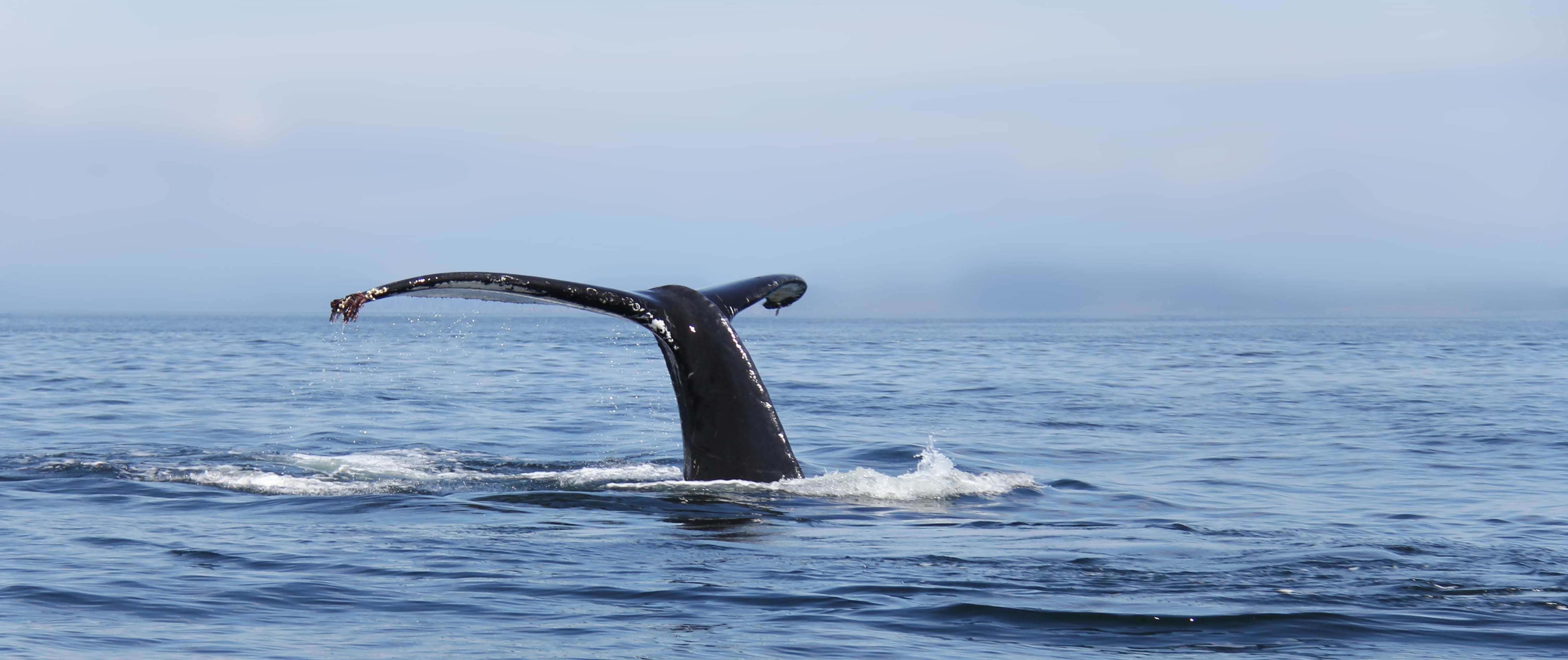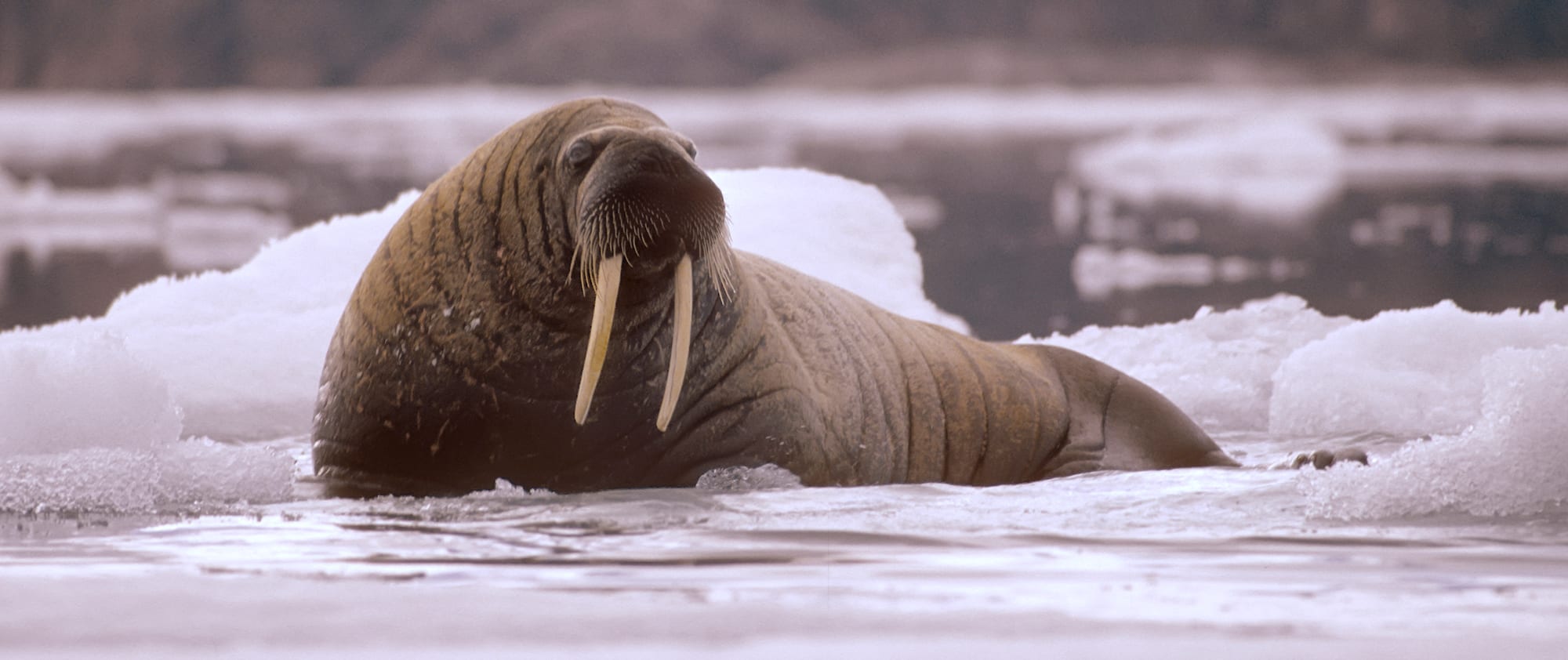You will have the opportunity to experience a lot of different birds in our Arctic paradise, Greenland. The vast majority of bird species are sea or coastal birds, and you will not meet them further inland. A funny fact about the Arctic bird species is that they are often larger than their counterparts elsewhere in the world. This helps them stay warm.
Greenland is home to large majestic birds such as eagles, but also smaller birds like sparrows. A very impressive sight is the large breeding grounds of the birds on the coasts of Greenland.
Birdlife in Greenland
Greenland is home to about 230 different species of birds, but it is only approximately 30 of those who live here all year round. The many bird species that do not live in Greenland all year migrate here to breed or as part of their further migration to other destinations. A large part of the migratory birds come from North or Central America.
Although most birds are to be found along the coasts at their large breeding grounds, there is still a chance to see some a little further inland. The only place you won’t see birds is on the ice sheet.
The most common birds in Greenland
We will introduce you to some of the most common bird species in Greenland. They are an important part of Greenland’s wildlife and have also been a major part of the hunting culture of the Inuit.
The Sea Eagle
Haliaeetus Albicilla
This large majestic bird of prey is the largest in Greenland. In Greenlandic, the sea eagle is called Nattoralik. It is very eye-catching with its impressive size and huge wingspan. Also, it has very distinctive white tail feathers.
Sea eagles form couples for life and always return to the same breeding grounds every year. Their chicks are generally browner in the plumage, which also allows some to confuse them with the golden eagle.
What does a sea eagle eat?
The sea eagle hunting technique depends on the prey it hunts and the situation. They eat other birds and small mammals such as hares.
How big is the eagle?
The largest sea eagle was found in an area just outside Nuuk. However, the bird was already dead when a hunter found it. The wingspan of the sea eagle was measured to be about 2.5 meters. Nowhere else in the world they have grown so large.
The fulmar
Fulmarus Glacialis
The name “fulmarus” comes from Old Norse and is a combination of two words, “fúll” and “már,” which means foul gold, i.e., smelling seagull. The name of the fulmars refers to their smelly stomach acid. The stomach acid can be used for defense, food for their cubs, or as an energy source for longer flights out to sea. The fulmar is a social bird and breeds in large colonies on mountainsides, close to the sea.
The fulmar has a really good sense of smell, which they use to find fish under the sea. They can smell the fish oil on the sea surface and thereby find their prey.
Outside the breeding season of the fulmar, they are pelagic, meaning they live their lives out to sea. They are incredible divers and can dive several meters below sea level to catch their prey.
The fulmars are fast and can fly at speeds close to 50 kilometers per hour, which is comparable to a scooter.
How big and how old can the fulmar get?
Fulmars can become up to 40 years old, and they are quite large with body lengths of 45-50 centimeters. Their wingspan is about 1 meter, and they weigh one half to a full kilo.
Is the fulmar a seagull?
The fulmar is a petrel bird, although it is are quite similar to the seagulls. Petrels are seabirds, which means they spend most of their time out at sea. They are mainly only on coasts and close to land during their breeding period.
The black guillemot
Cepphus Grylle Arcticus
The Icelandic name of the black guillemot originates from an ancient Icelandic dialect, where they called the bird teisti or teista, which means “the bird that whistles.” This name probably comes from the fact that the black guillemot has a light, howling whistle. In Greenlandic, however, the bird is known by the name Serfaq.
The black guillemot is good at hiding in the countryside. Its plumage is white and gray, with a gray head and backside in winter for camouflage. However, the rest of the year it is dressed in a beautiful dark brown and black plumage with distinctive white underwings and white spots on the upper side of both wings. Finally, it has very eye-catching red legs.
Black guillemots couple for life and are usually very loyal to their colonies and breeding grounds, returning year after year. They usually live near the coast and eat fish and crustaceans, although they can change their food source if needed. They often dive for fish in shallow waters and can hold their breath for up to 2-3 minutes!
How big is the black guillemot?
The black guillemot can grow up to 30 centimeters long and weigh about 500 grams; it’s not a big bird. Their wingspan is about half a meter, so they have large wings compared to their small, light bodies.

Greenland Shark
This strange species is one of the world's greatest mysteries, but we love the story of the Greenland Shark. It is the world's second-largest carnivore shark, surpassed only by the white shark.
Read story
Whales in Greenland
Get close to the giants of the sea. Greenland is home for many species of whales and you will have plenty of opportunity to experience these majestic animals.
Read story
Walrus
The walrus with its big tusks is a bit of a legend among Greenlandic people. They are part of the seal family, but also part of a special group of predators.
Read storyThe eider
Somateria Mollissima
The eider is the largest of the ducks in the north. Their scientific name Somateria Mollissima means “softest down body” in Greek. This is very appropriate, as their down had, and still has today, an important role in keeping us warm. The Greenlanders have given the eider bird the name “miteq siorartooq.”
Eiders form large “nurseries” where the females take turns to look after the young. There can be more than 100 chicks in these duck nurseries.
The eider is a capable diver and can dive about 20 meters down to catch food. They usually eat starfish, crabs, or similar small animals from the sea. They are known to swallow their prey completely.
How big does an eider get?
The eider can be 60 to 70 centimeters long from beak to tail, with a wingspan of about one meter. These are not big wings for such a large bird, but ducks don’t usually have big wings either.
The ptarmigan
Lagopus Mutus
The ptarmigan is called “aqisseq” in Greenlandic, and it is a part of the chicken bird family. They change color according to season. In the mating season and into the summer, they have beautiful white plumage, while the rest of the year it will be gray and brown for the males, while the females are brownish. When the color of the plumage changes, the birds almost resemble works of art with their beautiful white and brown colors.
The size of the population of the ptarmigans can vary a lot. When the numbers are very high, we call it a “ptarmigan year.”
The ptarmigans are resident birds, which means that they usually do not migrate away during the winter months. However, the northern populations will usually migrate south between October and February.
How big is a ptarmigan?
The ptarmigan is 30 to 40 centimeters in length and usually weighs between 400 and 800 grams. They have a wingspan of about 60 centimeters. It is a small, compact bird, which is incredibly beautiful all year round.
Other birds in Greenland
As mentioned, Greenland is a country that is home to many different bird species. Some stay here only for short periods, e.g., during the breeding season, while others live in Greenland all year round.
The Arctic countries have many distinctive and incredibly beautiful birds, all with their own story and way of life. If you take a trip along the coast on your trip to Greenland, you will see a lot of these amazing animals.
Do penguins live in Greenland?
We have been asked many times if there are penguins in Greenland. The answer is a simple no, even though the country is covered with ice and snow. The penguins only live in Antarctica and the countries closest to Antarctica.